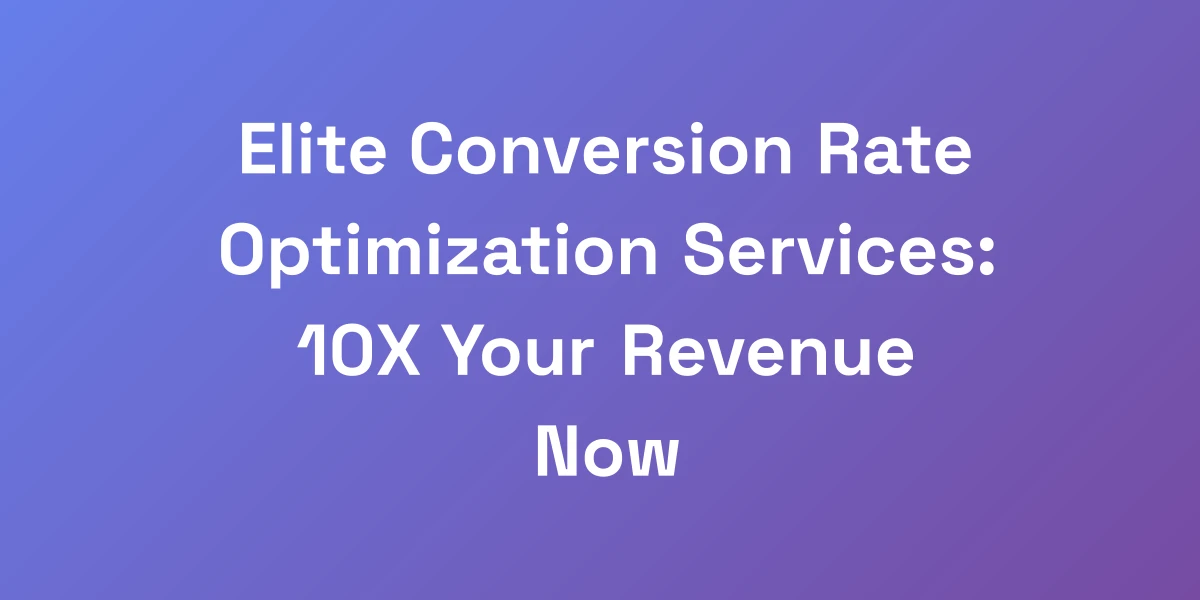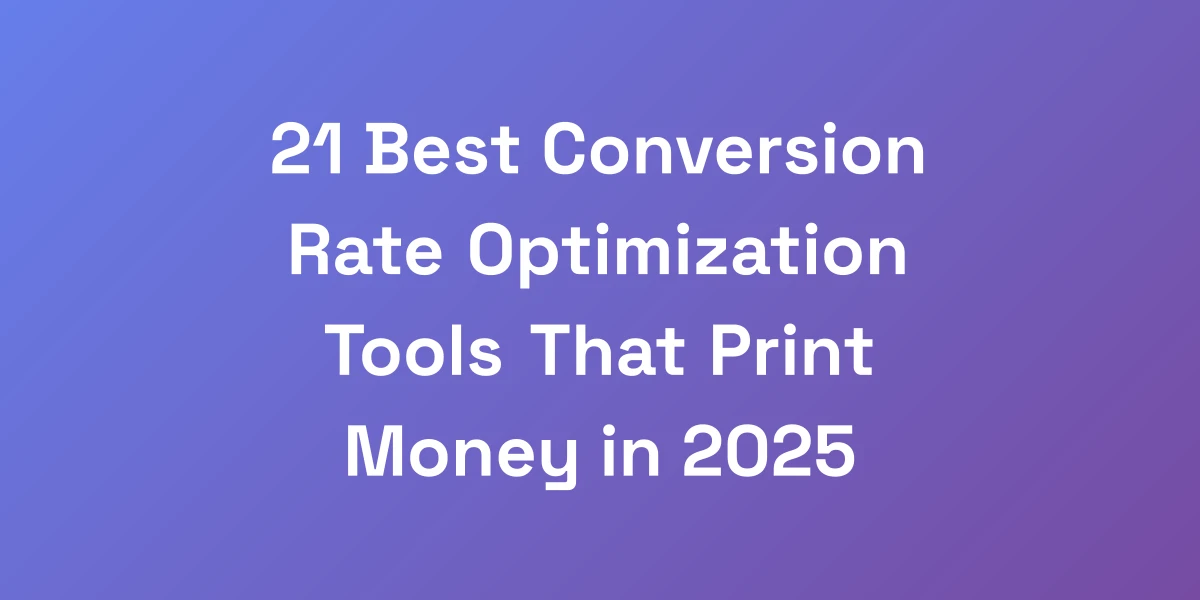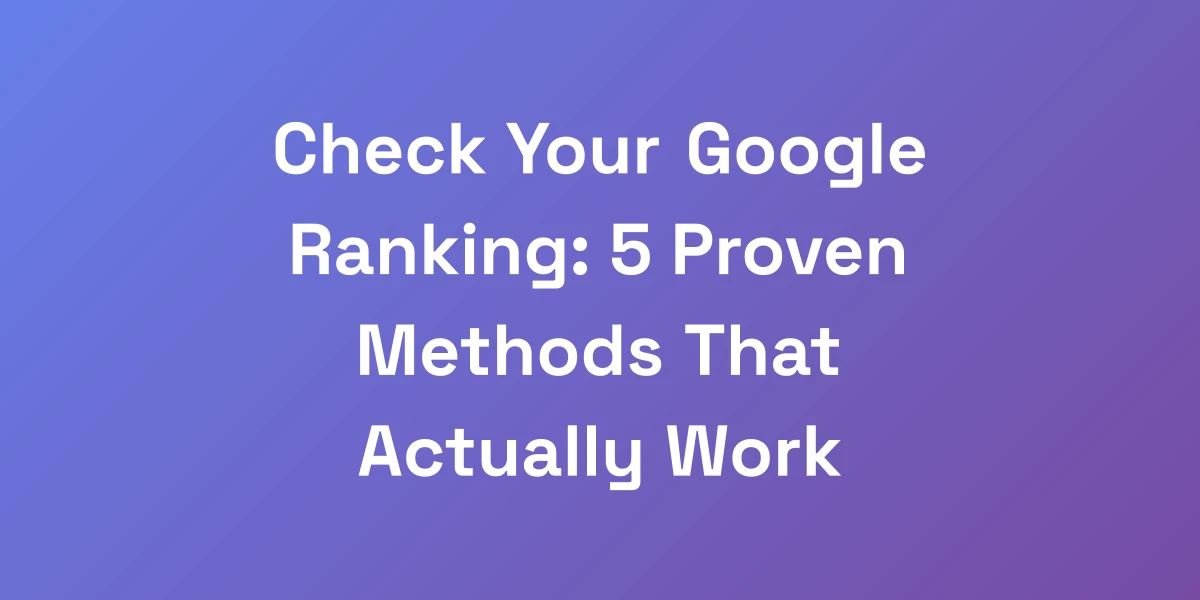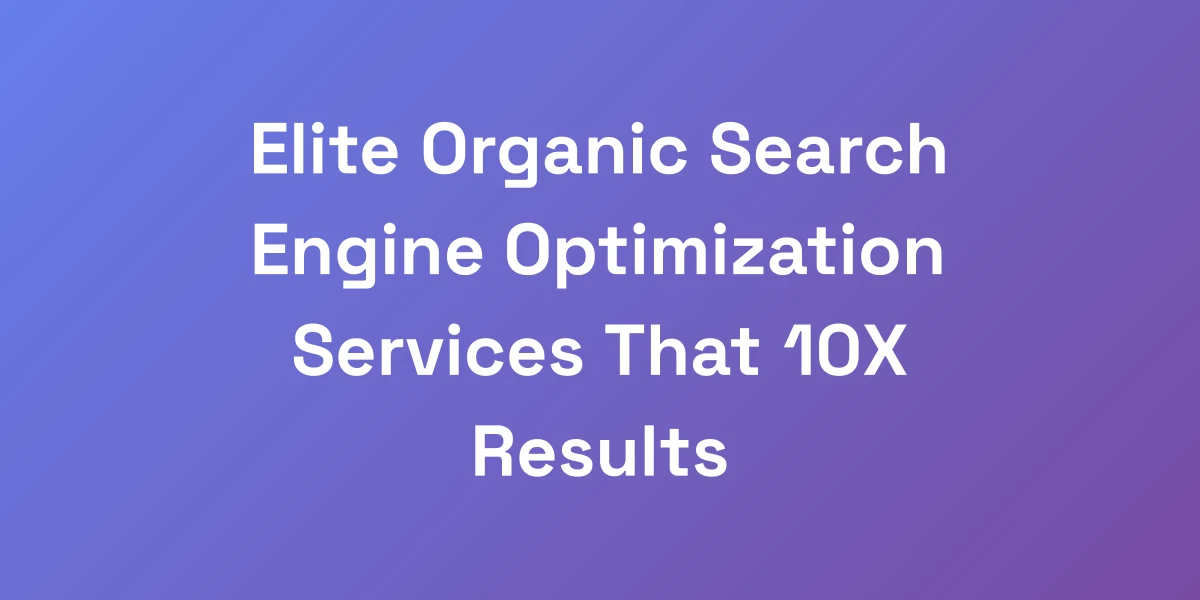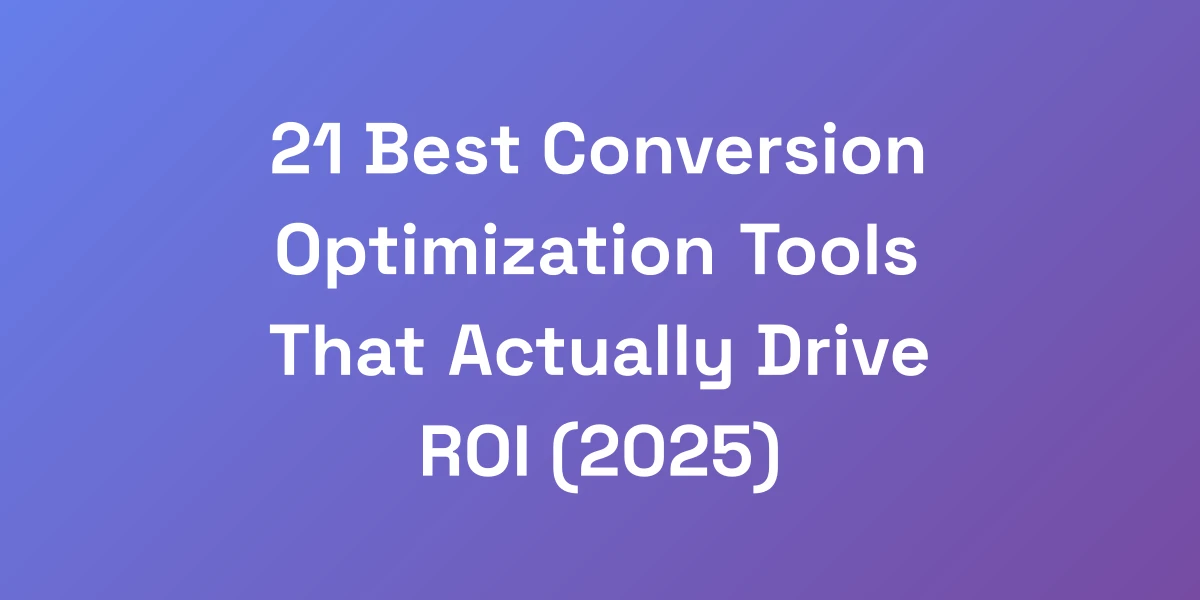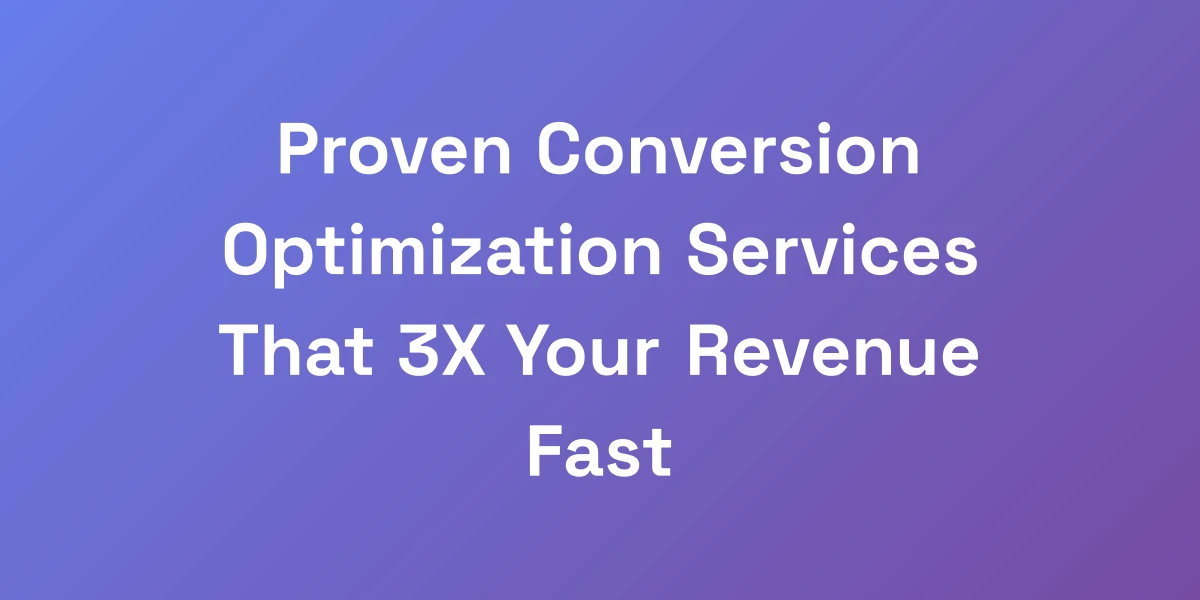
Proven Conversion Optimization Services That 3X Your Revenue Fast
Mar 15, 2025 | By [email protected]
Why Most Websites Are Bleeding Money (And How CRO Fixes It)
Let me hit you with some truth: 93% of websites are leaving money on the table right now. We’ve analyzed thousands of businesses, and here’s what kills us – they’re all obsessed with traffic but ignore conversion rate benchmarks.
It’s like filling a bucket with holes and wondering why it’s empty. Here’s the reality: if you’re not optimizing for conversion, you’re basically setting your money on fire.
But here’s where it gets interesting – the right conversion optimisation services don’t just patch holes; they transform your entire revenue system.
The Hidden Cost of Poor Conversion Rates
Every visitor that leaves without converting is a missed opportunity. Think about it – you’ve invested time and money to drive traffic, but without effective conversion strategies, it’s like handing your audience a golden ticket and not doing jack for follow-up.
Consider the fashion industry, where average conversion rates hover between 1.01% to 2.20%. Without addressing this, businesses are leaving thousands of dollars on the table each month.
- Lost Revenue: Poor conversion rates directly translate to lost sales and revenue.
- Wasted Marketing Spend: You’re spending on traffic that never converts.
- Lower Customer Lifetime Value: Without conversions, it’s hard to build lasting customer relationships.
Imagine pouring resources into your website only to see minimal returns. It’s frustrating, but the solution lies in strategic conversion optimization. Addressing this can drastically reduce these hidden costs.
Why Traffic Without Conversion Is a Money Pit
Bringing in traffic is the easy part; converting that traffic is where the real challenge lies. High traffic without proper conversion means you’re essentially running a marathon and stopping every mile. It’s exhausting and ineffective.
For instance, in the B2B SaaS industry with a meager 1.1% conversion rate, the relationship between traffic and conversion becomes starkly evident. Even with significant traffic, the actual conversions may barely cover your operational costs.
- High Bounce Rates: Visitors leaving immediately increases bounce rates, signaling poor user experience.
- Low Engagement: Without conversion-focused strategies, user engagement remains superficial.
- ROI Deterioration: The return on investment for your traffic campaigns plummets.
Conversion optimization bridges this gap, ensuring that your traffic efforts are not in vain but are actively contributing to revenue growth.
The Mathematical Edge: Small Changes, Massive Returns
It’s not always about massive overhauls. Often, small, strategic tweaks can lead to exponential gains. Think of it as optimizing the gears in a finely tuned machine – each minor adjustment plays a pivotal role in overall performance.
Consider simple changes like adjusting your call-to-action buttons or refining your landing page copy. These seemingly minor adjustments can significantly enhance user engagement and drive higher conversion rates.
- CTA Optimization: A more compelling call-to-action can increase clicks by up to 50%.
- Page Layout: Rearranging elements for better flow can boost conversions by 20%.
- Personalized Messaging: Tailoring content via autoblogging to user segments can enhance relevance and drive action.
These small changes, when executed correctly, can create a ripple effect, multiplying your revenue without the need for substantial investments.
Common Conversion Killers Most Businesses Miss
There are several pitfalls that businesses unknowingly fall into, sabotaging their conversion efforts. Let’s highlight some of these common conversion killers:
- Poor Website Design: Cluttered layouts and confusing navigation frustrate users.
- Lack of Trust Signals: Without testimonials or secure payment icons, visitors hesitate to convert.
- Slow Page Load Times: Every second counts; delays can significantly drop conversion rates.
- Unclear Value Proposition: If visitors can’t quickly grasp what you offer, they move on.
- Inadequate Mobile Optimization: With mobile traffic soaring, a non-responsive site is a major deterrent.
Addressing these issues through targeted conversion optimization services can eliminate these barriers, paving the way for higher conversions and increased revenue.
The Real Reason Your Competitors Are Winning
Your competitors aren’t necessarily getting more traffic; they’re simply better at converting the traffic they have. Strategic conversion optimization sets them apart, allowing them to maximize their existing visitor base effectively.
Take the construction industry, with average conversion rates around 1.9%. A competitor who implements effective CRO strategies can outperform you without increasing their marketing spend, simply by converting a higher percentage of their visitors.
- Superior User Experience: Intuitive design and seamless navigation enhance user satisfaction.
- Personalized Engagement: Tailored content and offers resonate more with visitors.
- Data-Driven Decisions: Using analytics to inform tweaks and changes ensures continuous improvement.
To stay competitive, it’s crucial to not just drive traffic but to convert it efficiently. Investing in proven conversion optimization services can level the playing field and help you outpace your competitors.
The Science Behind 7-Figure Conversion Optimization
Listen up, because this is where most “experts” get it wrong. True conversion optimization isn’t about random A/B tests or copying what worked for others. It’s a systematic approach to understanding human psychology.
When you get this right, you’re not just improving numbers – you’re creating a money-printing machine. We’ve seen businesses go from struggling to 7-figures using these exact principles. The key? It’s all about leveraging behavioral triggers that actually make people take action.
Understanding the Psychology of High-Converting Pages
At the core of conversion optimization lies a deep understanding of human behavior. High-converting pages cater to the psychological needs and desires of their visitors.
Consider the principle of social proof. Displaying testimonials and user reviews builds trust and reduces hesitation, encouraging visitors to convert.
- Scarcity and Urgency: Limited-time offers create a sense of urgency, pushing visitors to act quickly.
- Authority: Showcasing certifications or endorsements establishes credibility.
- Reciprocity: Offering valuable content or freebies encourages visitors to give back by converting.
By tapping into these psychological triggers, conversion optimization services can design pages that resonate deeply with users, driving higher conversion rates.
The Three Pillars of Persuasive Design
Persuasive design is the backbone of effective conversion optimization. It revolves around three main pillars:
- Visual Appeal: Aesthetically pleasing designs capture attention and keep users engaged.
- Usability: Intuitive navigation and seamless interactions ensure a smooth user experience.
- Emotional Connection: Designs that evoke emotions can significantly influence user decisions.
Balancing these pillars ensures that your website not only attracts visitors but also guides them effortlessly towards conversion. It’s about creating an environment where visitors feel comfortable and compelled to take action.
Data-Driven Decision Making Framework
In the realm of CRO, decisions should be backed by data, not gut feelings. A robust data-driven framework involves:
- Analytics Tracking: Implementing tools like Google Analytics to monitor user behavior.
- Data Segmentation: Breaking down data to understand different user segments.
- Performance Metrics: Focusing on key performance indicators that align with business goals.
By continuously analyzing data, conversion optimization services can identify patterns, uncover issues, and implement strategies that drive consistent improvements. This systematic approach eliminates guesswork and ensures that every change is aimed at enhancing conversions.
Advanced A/B Testing Strategies That Actually Work
A/B testing is a staple in conversion optimization, but it’s the advanced strategies that truly make a difference.
Instead of testing one element at a time, consider multivariate testing to see how different combinations perform. For example, testing both headline and call-to-action simultaneously can provide deeper insights into user preferences.
- Sequential Testing: Implement changes in phases to isolate the impact of each variable.
- Personalized Testing: Tailor tests based on user segments for more relevant results.
- Automated Testing Tools: Utilize AI-powered tools to run and analyze tests more efficiently.
These advanced A/B testing methods enable a more nuanced understanding of user behavior, leading to more effective optimization strategies and higher conversion rates.
User Behavior Analysis: Beyond Basic Heat Maps
Heat maps are a great starting point, but to truly understand user behavior, you need a deeper analysis.
Tools like session recordings and user journey tracking provide insights into how users interact with your site. For example, observing where users hesitate or drop off can highlight areas needing improvement.
- Session Recordings: Watch real users navigate your site to identify pain points.
- User Surveys: Collect direct feedback to understand user motivations and frustrations.
- Behavior Flow Analysis: Visualize the path users take to spot common drop-off points.
This comprehensive approach to user behavior analysis allows conversion optimization services to make informed decisions that enhance user experience and drive conversions.
The Psychology of Price Anchoring and Value Perception
Pricing strategy is a critical factor in conversion optimization. The psychology behind price anchoring can significantly influence how users perceive value.
For instance, displaying a higher original price next to a discounted price makes the discount seem more substantial. This strategy leverages the anchoring effect, where the first price seen sets the reference point for the perceived value.
- Charm Pricing: Pricing products just below a round number (e.g., $9.99) can make them appear more affordable.
- Bundling: Offering bundled products at a discounted rate increases perceived value.
- Tiered Pricing: Presenting multiple pricing options caters to different budget levels and encourages higher spending.
Effective use of these psychological pricing strategies can enhance value perception, making users more likely to convert.
The Ultimate CRO Implementation Blueprint
Here’s the brutal truth about implementation: most businesses overcomplicate it. They get paralyzed by options and end up doing nothing. But we’re going to give you the exact blueprint we use with our clients to generate millions in additional revenue.
This isn’t theory – it’s a battle-tested system that works across industries. The key is following the right sequence and focusing on the highest-impact changes first. Let us show you how to cut through the noise and get results fast.
The 80/20 Optimization Framework
Focus on the 20% of changes that will drive 80% of your results. This framework helps prioritize optimization efforts, ensuring that you invest time and resources where they matter most.
- Identify Key Pages: Focus on pages with high traffic but low conversion rates.
- Analyze User Behavior: Use data to understand where users are dropping off.
- Implement High-Impact Changes: Make adjustments that address the most critical issues first.
By concentrating on the most impactful areas, you can achieve significant improvements without spreading your efforts too thin.
High-Impact Testing Sequence
Structuring your testing process is crucial for sustained optimization. Start with broad changes and then move to more specific tweaks based on data insights.
- Initial Hypothesis: Based on user behavior and data, propose potential changes.
- Implement Tests: Use A/B tests to evaluate the effectiveness of each change.
- Analyze Results: Determine which changes had the most significant impact and implement them permanently.
This sequential approach ensures that each test builds on previous insights, creating a continuous loop of improvement.
Converting Traffic Into Predictable Revenue
Predictable revenue comes from consistently converting traffic through repeatable processes. This involves creating a reliable conversion funnel that can be scaled and replicated.
- Define Your Funnel: Clearly outline each stage of the user journey from awareness to purchase.
- Optimize Each Stage: Ensure that every stage of the funnel is optimized for maximum conversion.
- Automate Processes: Use marketing automation for agencies to maintain consistency and efficiency in your conversion efforts.
By systematizing your conversion process, you can achieve predictable and scalable revenue growth.
Mobile-First Optimization Techniques
With mobile devices accounting for 79% of all landing page visits, optimizing for mobile is non-negotiable. Yet, many businesses overlook this critical aspect, resulting in lower conversion rates.
- Responsive Design: Ensure your website looks and functions seamlessly across all devices.
- Speed Optimization: Mobile users expect fast-loading pages; optimize images and streamline code.
- Touch-Friendly Elements: Make buttons and links easy to tap, reducing the chance of user frustration.
Implementing mobile-first optimization techniques not only improves user experience but also boosts conversion rates significantly.
Advanced Funnel Optimization Strategies
Optimizing your sales funnel involves refining each stage to reduce friction and enhance user flow. Here are some advanced strategies:
- Personalized Content: Tailor content to different user segments to increase relevance and engagement.
- Retargeting Campaigns: Re-engage visitors who have shown interest but haven’t converted.
- Streamlined Checkout Process: Simplify the checkout process to minimize drop-offs.
These strategies create a seamless user journey, ensuring that visitors move smoothly through the funnel towards conversion.
Scaling What Works: The Multiplication Method
Once you’ve identified what works, it’s time to scale those strategies across your entire business. The Multiplication Method involves:
- Replication: Apply successful strategies to other parts of your website or business operations.
- Automation: Use marketing automation for agencies to automate repetitive tasks, ensuring consistency and efficiency.
- Continuous Monitoring: Regularly review performance to ensure that scaled strategies remain effective.
By systematically scaling successful tactics, you can multiply your conversion rates and drive exponential revenue growth.
Measuring Success: Beyond Basic Conversion Metrics
Stop focusing on vanity metrics that don’t matter. We’re here to show you exactly what to measure and how to measure it. The goal isn’t just to increase conversion rates – it’s to maximize profit per visitor.
Most businesses track the wrong things and make decisions based on incomplete data. But when you understand the right metrics, you can make decisions that actually move the needle. Here’s how to measure what really matters and turn data into dollars.
The Only 5 Metrics That Actually Matter
Focus on metrics that directly impact your bottom line. Here are the five that we consider essential:
- Conversion Rate: The percentage of visitors who complete a desired action.
- Average Order Value (AOV): The average amount spent each time a customer completes a purchase.
- Customer Lifetime Value (CLV): The total revenue a business can expect from a single customer account.
- Cost Per Acquisition (CPA): The cost associated with acquiring a new customer.
- Return on Investment (ROI): The profitability ratio that measures the efficiency of an investment.
These metrics provide a comprehensive view of your conversion performance and financial health, guiding strategic decisions that drive growth.
Advanced Analytics Setup for Maximum Insight
To truly harness the power of data, your analytics setup needs to be robust and comprehensive. Here’s how to achieve maximum insight:
- Implement Comprehensive Tracking: Use tools like Google Analytics, Hotjar, and Mixpanel to gather detailed data on user behavior.
- Set Up Custom Dashboards: Tailor dashboards to display the metrics that matter most to your business.
- Integrate Data Sources: Combine data from different platforms to get a unified view of your performance.
With an advanced analytics setup, you can uncover deeper insights into user behavior and make data-driven decisions that enhance conversions.
Revenue Attribution Modeling
Understanding which channels contribute to your revenue is crucial for effective optimization. Revenue attribution modeling helps you:
- Identify High-Performing Channels: Determine which marketing channels are driving the most revenue.
- Allocate Resources Effectively: Invest more in channels that deliver the best ROI.
- Optimize digital marketing for small business strategies: Fine-tune your strategies based on channel performance.
By accurately attributing revenue to different channels, you can optimize your marketing efforts to focus on what truly drives growth.
Customer Lifetime Value Optimization
Maximizing CLV is about nurturing lasting relationships with your customers. Here’s how to optimize it:
- Enhance Customer Experience: Deliver exceptional service to increase satisfaction and loyalty.
- Implement Loyalty Programs: Reward repeat customers to encourage continued business.
- Personalize Marketing Efforts: Use data to tailor your marketing messages for startups to individual preferences.
By focusing on CLV, you can increase the long-term profitability of each customer, driving sustained revenue growth.
Real-Time Performance Monitoring
In today’s fast-paced digital environment, real-time monitoring is essential. It allows you to:
- Quickly Identify Issues: Spot and address problems as they arise.
- Adjust Strategies on the Fly: Make informed decisions based on live data.
- Enhance User Experience: Ensure your website remains optimized and responsive to user needs.
Real-time performance monitoring ensures that your conversion optimization efforts are always aligned with current user behavior and market trends.
ROI Calculation Framework
Calculating ROI accurately is fundamental to understanding the effectiveness of your conversion optimization efforts. Here’s a simple framework:
- Identify Total Investment: Include costs related to CRO services, tools, and implementation.
- Calculate Revenue Gains: Measure the additional revenue generated from conversions.
- Compute ROI: Use the formula: (Revenue Gains – Total Investment) / Total Investment x 100%.
This framework helps you assess the financial impact of your conversion optimization strategies, ensuring that your investments are yielding positive returns.
Scaling Your Conversion Optimization for Maximum Impact
Here’s where most businesses hit a wall – they can’t scale their wins. But we’re going to show you how to take your initial success and multiply it across your entire business.
This isn’t about small wins anymore; it’s about creating a system that consistently generates higher conversions across all channels. The secret? Understanding how to leverage your successful tests and apply them systematically across your entire digital presence.
Cross-Channel Optimization Strategies
Maximizing conversions across multiple channels requires a unified approach. Here’s how to do it:
- Consistent Messaging: Maintain a consistent message across all channels to reinforce brand identity.
- Unified Analytics: Use integrated analytics to track performance across channels.
- Tailored Strategies: Adapt optimization strategies to suit the unique characteristics of each channel, using insights from Digital Marketing for Agencies: 7-Figure Growth Blueprint (2025).
Cross-channel optimization ensures that your efforts are synchronized, enhancing overall conversion rates and driving more significant revenue growth.
Automation and AI in CRO
Automation and AI are revolutionizing conversion optimization. They enable:
- Personalized Experiences: AI can deliver tailored content based on user behavior and preferences.
- Efficient A/B Testing: Automate testing processes to quickly identify high-performing variations.
- Predictive Analytics: Use AI to forecast user behavior and adjust strategies proactively.
Integrating automation and AI into your CRO strategies can significantly enhance efficiency and effectiveness, leading to higher conversion rates and increased revenue.
Building a Culture of Continuous Optimization
For sustained success, fostering a culture that prioritizes continuous optimization is essential. Here’s how:
- Encourage Experimentation: Promote a mindset of testing and learning within your team.
- Invest in Training: Equip your team with the skills and knowledge needed for effective optimization.
- Celebrate Wins: Recognize and reward successful optimization efforts to motivate continued improvement.
A culture of continuous optimization ensures that your business remains agile and responsive to changes, driving consistent growth and higher conversions.
Enterprise-Level Testing Programs
Scaling CRO efforts to an enterprise level involves implementing structured and comprehensive testing programs. Steps include:
- Develop Standardized Processes: Create standardized procedures for planning, executing, and analyzing tests.
- Utilize Advanced Tools: Invest in enterprise-grade CRO tools that offer robust features for large-scale testing.
- Collaborate Across Teams: Ensure cross-functional collaboration to leverage diverse insights and expertise.
Enterprise-level testing programs enable businesses to manage extensive CRO efforts efficiently, driving significant improvements in conversion rates across the organization.
Global vs. Local Optimization
Balancing global strategies with local nuances is crucial for effective CRO. Here’s how:
- Understand Regional Preferences: Tailor content and strategies to align with local cultures and preferences.
- Localized Testing: Conduct tests specific to different regions to identify unique optimization opportunities.
- Unified Global Strategy: Maintain a cohesive global strategy while allowing for localized adjustments.
By addressing both global and local optimization needs, conversion optimization services can enhance user experience and increase conversions across diverse markets.
Future-Proofing Your CRO Strategy
The digital landscape is ever-evolving, and your CRO strategy must keep pace. Future-proofing involves:
- Adopting Emerging Technologies: Stay ahead by integrating new technologies like AI and machine learning.
- Continuous Learning: Keep your team updated with the latest CRO trends and best practices.
- Flexible Frameworks: Develop adaptable frameworks that can quickly respond to new challenges and opportunities.
Future-proofing ensures that your conversion optimization efforts remain effective and relevant, driving sustained revenue growth even as the digital landscape evolves.
Conclusion
We’ve journeyed through the critical aspects of conversion optimisation services that can triple your revenue fast. From understanding why most websites bleed money to implementing advanced CRO strategies and scaling your efforts for maximum impact, the pathway to higher conversions is clear and actionable.
The key takeaways? Focus on data-driven decisions, understand your users’ psychology, and implement a systematic approach to optimization. These elements not only enhance your conversion rates but also transform your revenue system into a powerhouse of growth.
Ready to stop leaving money on the table and start seeing tangible revenue growth? Invest in proven conversion optimization services today. Let’s take your business to the next level together.
Have questions or experiences with CRO that you’d like to share? Drop a comment below and join the conversation. We’re here to help each other succeed.

